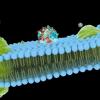I've argued up thread that there is value in our developing Multi-Dimensional Explanations for the effect of the C60 Potion. Not proofs, but Explanations. Among other things, Multi-Dimensional Explanations provide the means to more easily demonstrate the efficacy of the potion intervention. More importantly, they provide us with a broader scientific literature to cross check our hypotheses against to ensure that our Explanations at one Dimension aren't Falsified by the literature of another Dimension.
Case in point... niner's hypothesis about a C60 adduct acting as a SOD mimetic has now been "cross checked" against Immune and Inflammation literature vis-a-vis Turnbuckle's experience. And I think his hypothesis now must be considered a
stronger one as a result. The hypothesis is weaker without the cross check.
Another point about niner's hypothesis and the link to TNF reduction... TNF has been implicated as a major driver of many serious and non-serious disease states. As more community members participate in this experiment, all with different health/disease states, more positive health anecdotal stories ought to surface. If they don't surface, that should tell us something. But if/when they do surface, the first thing we look to see is if that positive health anecdotal story can be explained by TNF reduction. It should NEVER be possible to explain the story by a rise in TNF or inflammatory processes. That would Falsify the hypothesis.
Notice something else... I've suggested, more or less coherently at times, that potion efficacy could also be explained by increased effectiveness of the Vagus-CAIP-HRV nexus. Turnbuckle's experience is consistent with the hypothesis I've suggested. But I can't explain, at a detailed level, how that improvement of the V-C-H Nexus occurred by means of the potion. In contrast, niner's hypothesis can both explain Turnbuckle's experience and references literature about C60 being a SOD mimetic. His hypothesis assumes, however, that at least some C60 adducts are embedded in the cell, at least for a while. The rejuvenated V-C-H Nexus hypothesis, on the other hand, doesn't require C60 adduct embedding. The argument would be that a short duration rejuvenation of the V-C-H Nexus got the rats' own Innate Anti-Inflammatory machinery working effectively again and THAT's what accounts for their longer life span.
The point of mentioning all this is not to argue the details of these hypotheses. The point is to notice that we actually have some in place to design experiments around if a decision was taken to get funding to do these experiments.
If we're going to ask potential funding sources for more than a trivial amount of $ to explore potion efficacy, we need to be open to and serious about figuring out the
Complete Explanation to develop strong and testable hypotheses and not just the Explanations we're the most familiar with and feel comfortable with. The
more hypotheses we have, and the
more we understand their specific strengths and weaknesses as hypotheses, and what must be done to Falsify them, the more we're going to feel comfortable looking funding sources in the eye and asking for non-trivial $ to test them without blinking...
I'm familiar with how to get at Inflammation/Immune Dimension Explanations. I've made mistakes when I try to explain things only in terms of what I'm familiar with. There is incredible expertise here related to, among other things, cellular, gene, and oxidation related explanations. As I incorporate those explanations in my thinking, the value of the Explanations I'm most familiar with isn't diminished, it's increased. In leveraging the remarkable depth and breadth of this communities' Collective Intelligence, I increase my own knowledge and ability to act in way that makes sense consistent with that knowledge...
Um, like, it's clear now what blood test to get.

Edited by wccaguy, 07 June 2012 - 06:23 PM.























































